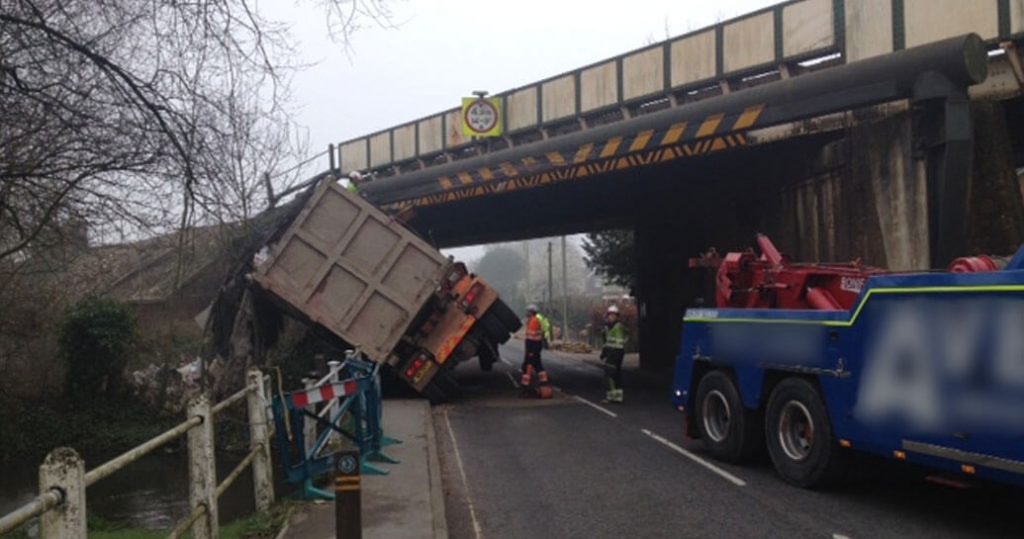Delays explained: bridge strikes

Bridge strikes cost taxpayers millions of pounds and delay thousands of passengers and road users every year.
They’re completely avoidable but continue to affect the railway. In fact, we typically deal with more bridge strikes in October and November than any other time of the year.
Why? Research suggests the shorter days and rise in the number of deliveries leading up to Christmas are likely to be the biggest reasons.
Most bridge strikes happen between 10am and 11am, but remain high all day until around 6pm. They can cause hours of travel chaos.
How do bridge strikes affect railway passengers?
The damage caused by bridge strikes means delays to journeys because we must make the railway safe again.
How do we respond to bridge strikes?
We typically get train services moving again within an hour of the first call about a bridge strike to the control centre.
Here’s the typical chain of events:
- The bridge strike is reported to a Network Rail control centre. Full details of the incident are taken and recorded on the control log of events for that day.
- Control contacts a signaller, who stops the trains and initiates the required operating instructions. Special arrangements are in place for motorbikes, cars and light vehicles, and where people are trapped in vehicles or the vehicle is carrying dangerous or hazardous material.
- Control arranges for an examination of the bridge. This is undertaken by two people: a bridge strike nominee (BSN) to examine a bridge up to a certain damage limit and a bridge strike examiner (BSE), who is qualified to assess all levels of damage to a structure.
- Occasionally, the damage is so extensive that a specialist team needs to give further help. Each railway route has a Route Asset Manager (RAM), which makes sure structures remain safe and fit for purpose. The team comprises experienced structural and civil engineers.
- Control then advises the police, the highway authority and other emergency services as required.
- The BSN and or BSE evaluate the extent of any damage, so we can make decisions regarding the impact of any damage on the bridge’s ability to carry trains. We pass information from the site to control and the signaller.
- Train services resume as soon as we consider the bridge safe for trains. This typically takes less than an hour from first call to control but it can take longer.
- The time taken to restore passenger services depends on the extent of the damage, time of day and bridge location. Routinely assessing the robustness of all bridges over public roads greatly helps in returning train services to normal.
- We capture incident data and compile reports. We send them to the Network Rail safety reporting team, bridge management team and claims team.
Watch this video of a bridge strike last year in Tarporley, Cheshire:
Measure your vehicle
- Drivers can easily avoid such incidents by measuring their vehicles and anything they’re towing before starting their journeys.
- To combat bridge strikes, Network Rail launched a campaign aimed at professional lorry drivers and others who drive high-sided vehicles.
- Bridge strikes: when and where they occur
- Find out more about bridge strikes and how to report one